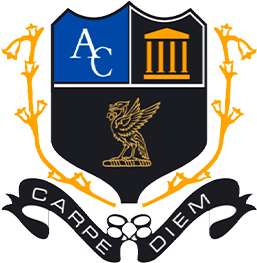MATHS
CURRICULUM
Maths will teach all pupils the necessary skills to be able to make every day number, algebra, statistics, geometry and shape based decisions so they are able to acquire the confidence to fully participate as a successful member of society.
By the end of the year, pupils will be able to; use letters and combine variables; generate sequences; be able to solve simple probability problems; complete stem and leaf diagrams; calculate mean, median, mode and range; be able to calculate angles missing from, and in, a variety of shapes; solve area problems, understand rotational symmetry; know the basic angle facts; know properties of common shapes; have a basic understanding of the metric and imperial measuring systems; interpret scales; know factors, primes and powers; round to the nearest integer, work with negative numbers; multiply and divide with powers of ten; understand decimals; multiply and divide with whole numbers.
By the end of the year, pupils will be able to calculate a single event probability; know what a vertical line chart is; use a simple frequency table; work with simple formula; calculate using fractions, decimals and percentages; round to decimal places; rotate, reflect and translate a shape; find the area, perimeter and volume of a simple shape; recognise and state characteristics of common quadrilaterals; calculate angles in triangles and quadrilaterals; carry out metric – imperial conversions; understand ratio notation; use the number system effectively; use negative numbers.
By the end of the year, pupils will be able to work with vectors; use the probability addition rule; estimate using probability; create scatter diagrams; display grouped data; carry out constructions using a pair of compasses; solve equations with brackets; use index notation; solve combined events problems; use grouped frequency tables, create 2D representations of 3D shapes; calculate volumes and surface areas of cuboids; work with nets; carry out simple enlargements; calculate the area and circumference of a circle; know angles and parallel lines rules; be able to carry out scale drawing; use bearings; plot graphs of linear functions; use real life graphs; complete sequences; solve simple equations; share a value in a given ratio; use fractions with all four operations; round to significant figures; multiply and divide decimals; collect data and design questionnaires; use BIDMAS.
KS4 pupils follow the OCR syllabus. By the end of the year, pupils will be able to; find an interquartile range; find lines of best fit; construct plans and elevations; find loci; use Pythagoras’ Theorem; calculate with compound units; find linear inequalities; find geometric progressions; solve quadratic sequences; carry out prime factorisation; find the constant of proportionality; use limits of accuracy; carry out enlargements; work with prisms; find angles in polygons; work with compound units; plot cubic and quadratic graphs; find the equation of a straight line; be able to approximate.
KS4 pupils follow the OCR syllabus. By the end of the year, pupils will be able to; calculate the area under a non-linear graph; know the equation of a circle; use the probability equation rule; use vectors; calculate the surface area and volume of 3D shapes; find centres of rotation; use trigonometry; work with similarity and congruency in triangles; solve equations by factorising, including quadratics; solve simultaneous equations by a variety of methods; work with functions; work with identities.


